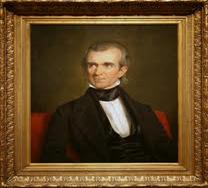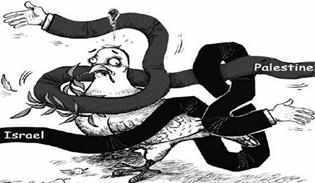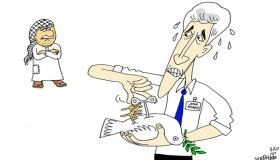www.aljazeerah.info
Opinion Editorials, July 2013
Archives
Mission & Name
Conflict Terminology
Editorials
Gaza Holocaust
Gulf War
Isdood
Islam
News
News Photos
Opinion Editorials
US Foreign Policy (Dr. El-Najjar's Articles)
www.aljazeerah.info
Iron Curtains & Imperialism
From the Berlin Wall to the Israeli Apartheid Wall
By Henry D'Souza
Al-Jazeerah, CCUN, July 29, 2013
Winston
Churchill1 popularized the usage of the term, “Iron Curtain,” to
signify the monstrous Berlin Wall, and the European barrier that separated
the Soviet Empire from the West after World War II.
Presidents J. F. Kennedy and R. Reagan tried to convince the Soviets
to “tear down the Wall,” as it was a symbol against “world peace, and world
freedom.” It was necessary to
expand the “frontiers of freedom.”
These were noble views. Yet the US and Israel, two western stalwarts,
have built walls of their own.
The question that arises is, are the circumstances very different with these
three walls?
After
World War II, Berlin was divided into four sectors: American, British,
French and Soviet. Within four
years Germany, the vanquished country, was divided into the Federal Republic
of Germany (West Germany) and the German Democratic Republic (East Germany.)
On May 26, 1952 the border between East and West Germany, and East
Germany and West Berlin was closed.
The Soviet Army then went on to separate the East from the West
progressively: on August 14, 1961, the Brandenburg Gate was closed and a few
months later West Berliners were not allowed to use border crossings freely.2
Between 1949 and 1961, it was estimated that 2.7 million Eastern
Europeans tried to flee Communism, and several died in their attempts.
Even border guards tried to escape the Communist yoke.
Elizabeth Pond4 notes that the Soviets subdued several revolts as
East Europeans tried to drive back the imperialists: East Berlin workers’
rebellion in 1953; the Hungarian uprising in 1956; Prague Spring in 1968;
Poland’s uprisings in 1956 and 1981.
Pond also notes that 1989 was the year that changed the world.
The Soviet Union collapsed: its army withdrew from Eastern Europe
without shedding blood, except in Romania; in November of that year the
Berlin Wall was opened; within two years, on October 3, 1990, Germany was
united once again. The British
and French needed some convincing from the US as they did not want to see a
powerful and united Germany.
Not
every liberated East German was pleased with the system in the West.
Reverend Christian Führer complained that “the banks and shops here
became temples of this capitalist region.” Employment was no longer
guaranteed. Unemployment was
distressingly high at 20%.5
It was difficult for distressed people to realize that the successful
re-unification of Germany would take time and immense optimism.
What the
Soviets left behind was anathema to European culture: the Death Strip.
There were two parallel barriers with no man’s land in between that
was booby-trapped and dotted with bunkers, watch-towers and electrified
fences. The 96 miles long strip
had gone through four generations of improvement and it was a haunting
symbol of the Cold War.6
One
cannot escape ironies of history: in this case, the chief liberator of
Europe, the US, itself has an Iron Curtain that is almost 2000 miles long,
from the southern tip of Texas to California.
By the 1983 La Paz Agreement7 America’s Iron Curtain is
62.5 miles north and south of the international boundary.
On the American side, four states are involved, Texas, New Mexico
Arizona and California; on the Mexican side, the wall covers six states,
Baja California, Sonora, Chihuahua, Nuevo Leon and Tampaulipas.
The Wall also involves 44 counties, and 80 municipalities, and 43
points of entry. In some places
the Wall is just a sign or a fence, in others there are barbed wires and
tall steel barriers. The large
metropolitan centers, like San Diego, El Paso, and Tijuana have double or
triple fencing, more horrendous than the Berlin Wall.
Given
that Mexican low-wage workers are seeking economic gain by entering the US
illegally, America has a problem controlling the inflow.
Almost 70% of the 2.2 million undocumented migrants who applied for
amnesty were Mexican, and another 10% were from other Latin American
countries, mainly Central American.
Mexico is the source of 33.7 million American migrants who will, by
2030, contribute approximately $35 billion a year to the American economy.
The money that is repatriated home to Mexico amounts to approximately
5% of Mexico’s GDP.8
Immigration policy, which has therefore become a
major issue in the US today, is tied with other problems.
Easily available guns from the US
are bought and sold in Mexico, while drug and human smugglers have taken
over the control of the Mexican border. Parts of the border have developed
into a war zone: the Immigration and Naturalization Service’s Apprehension
data showed that in 1961, 88,823 were apprehended coming illegally into the
US; the figure rose to 1.8 million in 2000; the figure was much lower ten
years later, 516,992. Many have
died crossing the Sonoran desert through dehydration and hypothermia.
Yet Mexico is the US’s third largest trading
partner, after Canada and China; in 2000, the trade was valued at $261.7
billion. It is estimated that
300 million people cross the border daily.
Consequently, the US has taken laudable steps to
strengthen its southern border and instituted legislation for development of
the region. In 1965, the
emphasis was on border patrols.
In 1993, the US introduced the INDENT System.
Since September 9, 2001, the southern border became a national issue
and border patrol was increased by 63%.
Five years later, the Secure Fence Act extended the Iron Curtain by
700 miles, mainly in Arizona and California.
Later, overall plans, much more positive than before, were broadened
and updated with Border 2012 and Border 2020.
By contrast the US has managed to monitor its
northern border, including Alaska, which is 5,500 miles long, much more
effectively without much trauma.
By inter-governmental cooperation, effective environmental
partnerships and more than 30 Agreements have been worked out.9
Perhaps, cultural similarities have to do with this high level of
cooperation.
So far, we assumed that the US was the victim of
illegal immigration, especially from the South.
But when we realize that the US maintained through the Monroe
Doctrine in 1823 that Latin America was its responsibility, we have to
assume that it was for the better not for exploitation.
The Monroe Doctrine was the first sign that the US was on an imperial
course.
The second series of steps that placed the US on an
imperial trajectory was Manifest Destiny.
Based on this principle, the US took Mexican lands by force.
The US started the Mexican War (1846-8) which enabled it to annex the
southern states that are bearing the brunt of illegal immigration.
The last of the Jacksonians President Polk (1845-9) annexed Texas,
and then the southern territory extending to California.
The Rio-Grande became the official US-Mexican boundary by the 1848
Treaty of Guadalupe-Hidalgo.10
If the Berlin Wall was the symbol of the Cold War,
of US-Soviet rivalry in peacetime, the Iron Curtain along the US-Mexican
border reflects US’s imperial policy in the New World during the nineteenth,
twentieth and twenty-first centuries.
Israel’s pro-apartheid fence, which is 472 miles
long, twice the 1949 ceasefire line, is a perfect example how the Iron
Curtain exploits thoroughly.10
If we assume that the Green Line, which the UN recognizes as the
current border between Israel and Palestine, is the 1967 border then 80% of
the Wall is on the Palestinian side.
Some encroachments are as much as 22 kilometers.
Israel will have annexed 16.6% of the West Bank, the western aquifer,
and entrapped 60,500 Palestinians between the Green Line and the Wall.
The 500 checkpoints and roadblocks are intended to make daily life
unbearable for the Palestinians.11
As in South Africa, Israel’s apartheid policy is to choke Palestinian
development through uneconomic “bantustans.”
The Palestinian Manifest Destiny is to recover first
the 1967 border and then all occupied Palestinian land.
They have graduated from slings to missiles.
The latest is demolition of parts of the wall that divide their
agricultural lands. To
commemorate Nakba Day, May 15, 2013, the 65th anniversary of the
presence of an Occupier, a group of 20 Palestinians broke down the wall at
Abu Dis to link Ezzarinya and Abu Dis with the Ras il-Amood neighborhood of
Jerusalem.12
The Palestinians have documented all the injustices that they have suffered
from Day One.
Regrettably, the purveyor of democracy and freedom,
the West, is also involved in other modern Iron Curtains.
The Spanish built on Moroccan islands of Ceuta and Melilla three rows
of walls, 12.4 miles long at a cost of €30 million.13
About a 100 Iron Curtains, or “peace lines,” separate Protestants and
Catholics in Belfast, Northern Ireland.14
A more explosive Iron Curtain stands on the 38th parallel
separating North and South Korea.
The wall, 154 miles long, was the outcome of the Armistice signed in
1953. This Demilitarized Zone
(DMZ) is in fact a “cease-fire line.”15
Lorenz feels that the DMZ is the most dangerous place in the world
because the North Koreans have threatened to use atomic weapons.
For practical purposes, the US-Mexican border is the most dangerous
in terms of loss of life, while the Israeli one is the most thorough in
choking Palestinian heritage.
July 18, 2013
©
Henry D’ Souza, 601-3700 Kaneff Crescent, Mississauga, On, L5A 4B8, Canada
Essays on Contemporary History
Images will be deleted when commercialized
Criticism welcome



Berlin Wall, July 1974 Brandenburg Gate, July 1974 Demolition of Berlin Wall, 1990




Rev.
Dr. Christian Feuhrer

US-Mexico Border Wall, 2013


An old border wall
Salvaging the dead


Reagan and Gorbachev
Part of the Great Wall
of China

Israel’s 760 kms wall in Palestine

Miguel Angel Trevino Morales, apprended in
Nuevo Laredo for drug and human trafficking


President James K.
Polk (1845-49)
|
|
|
|
||
|
||||||



